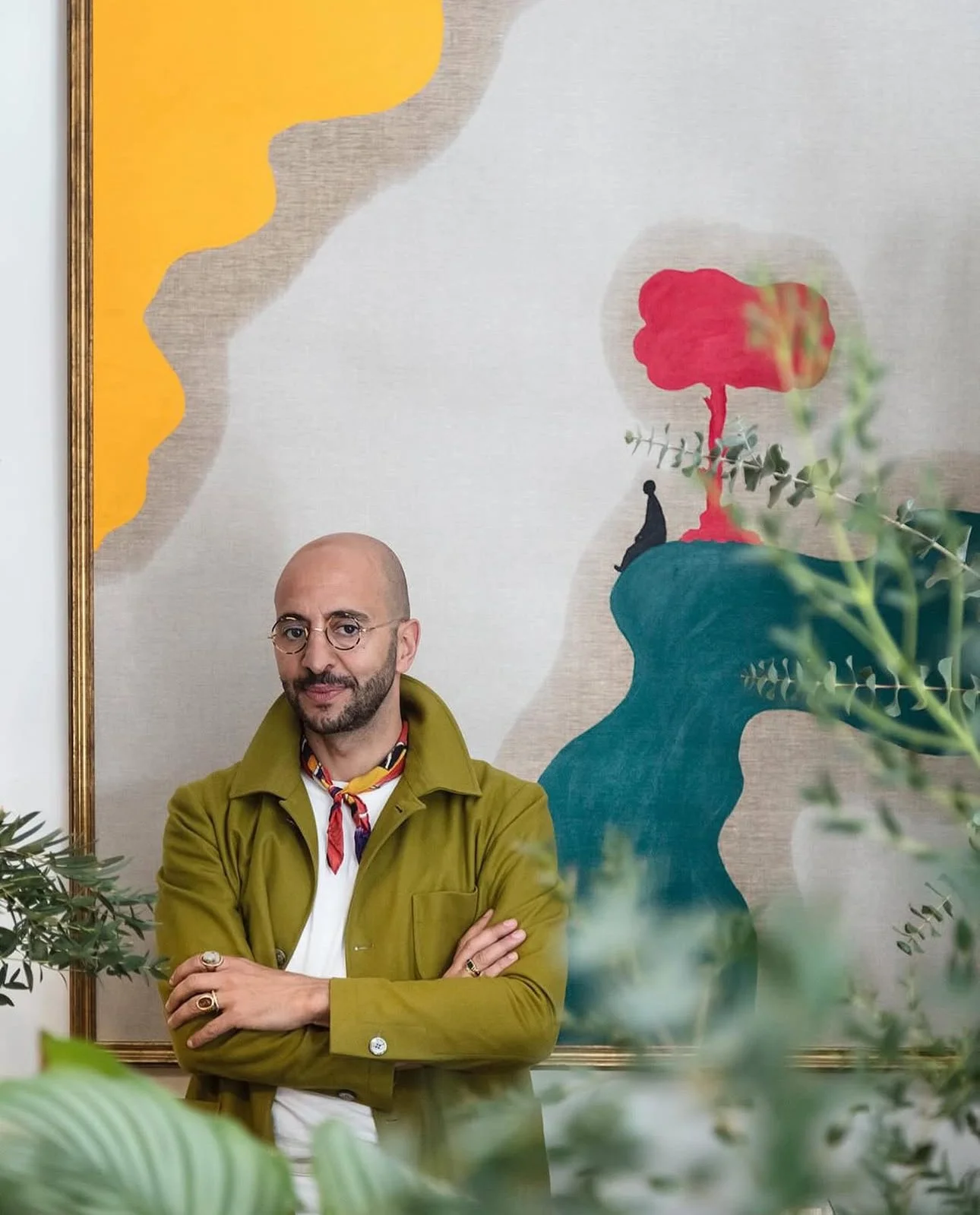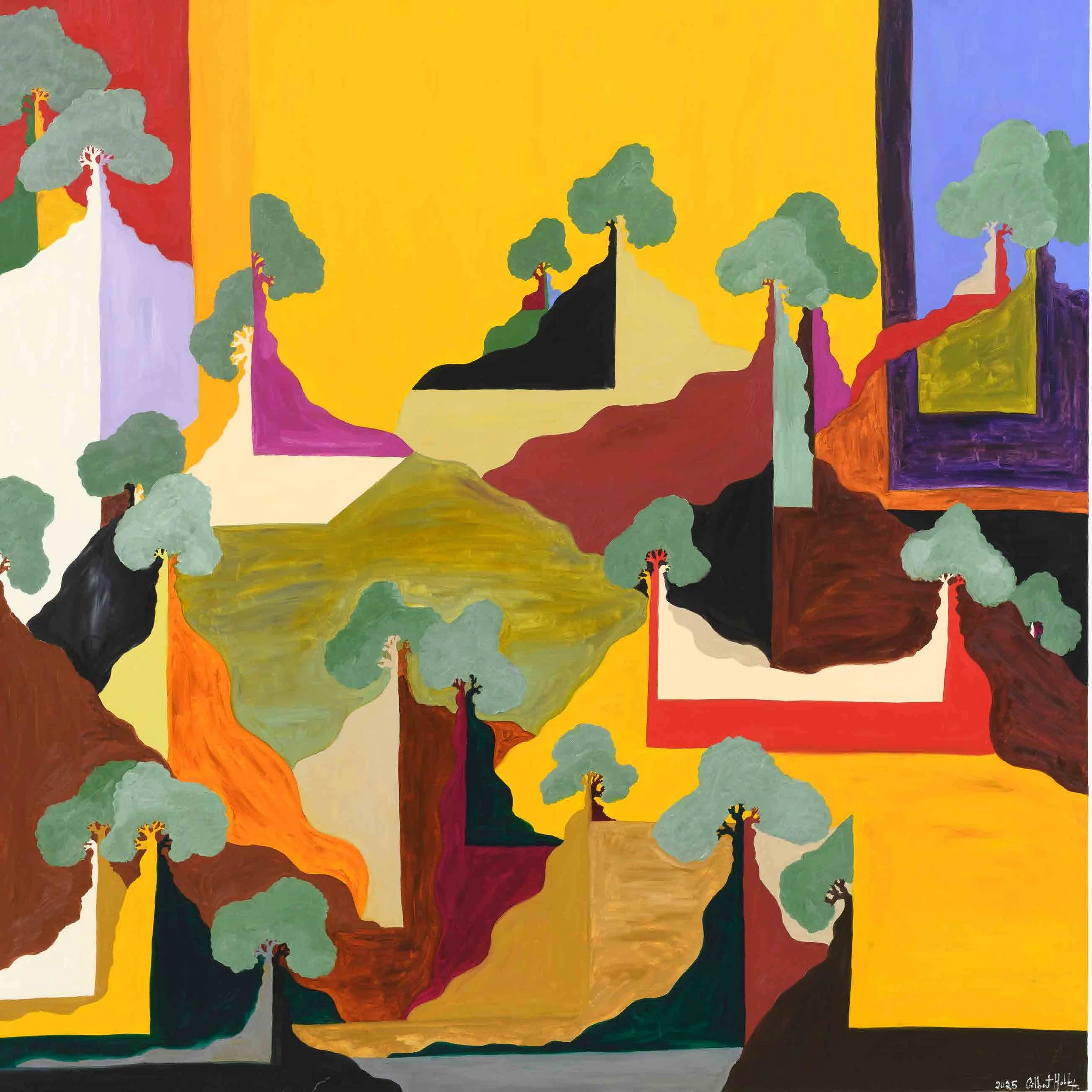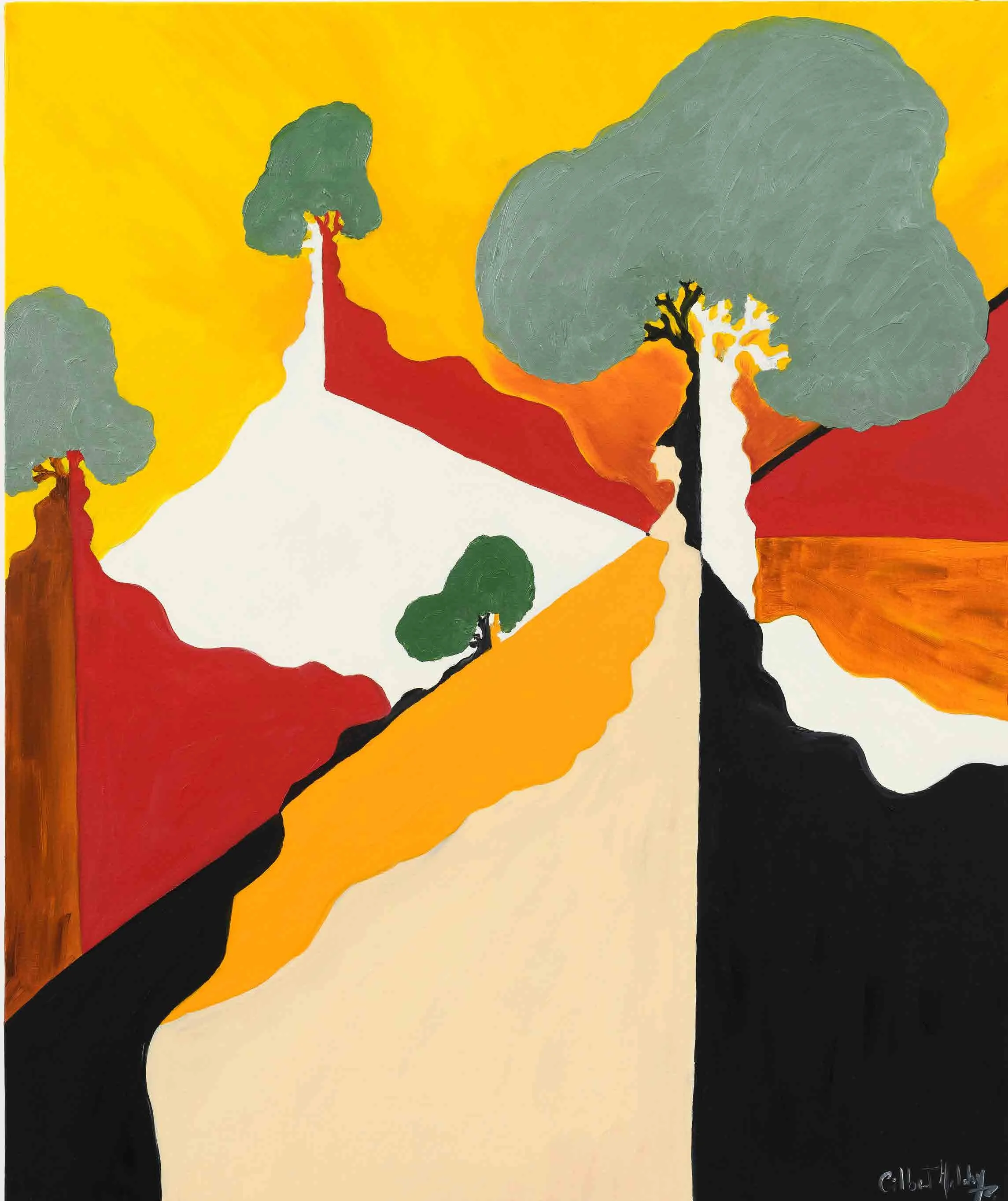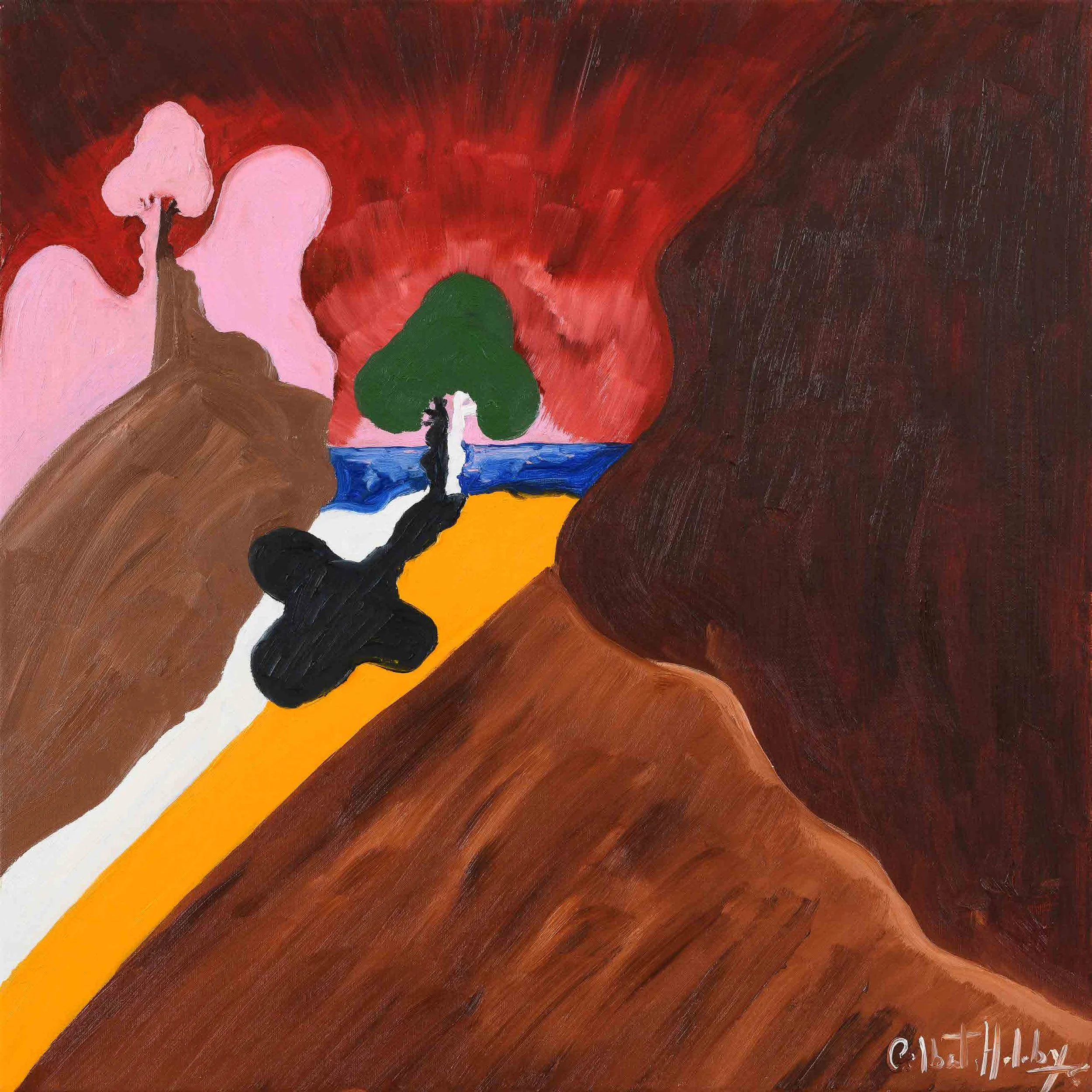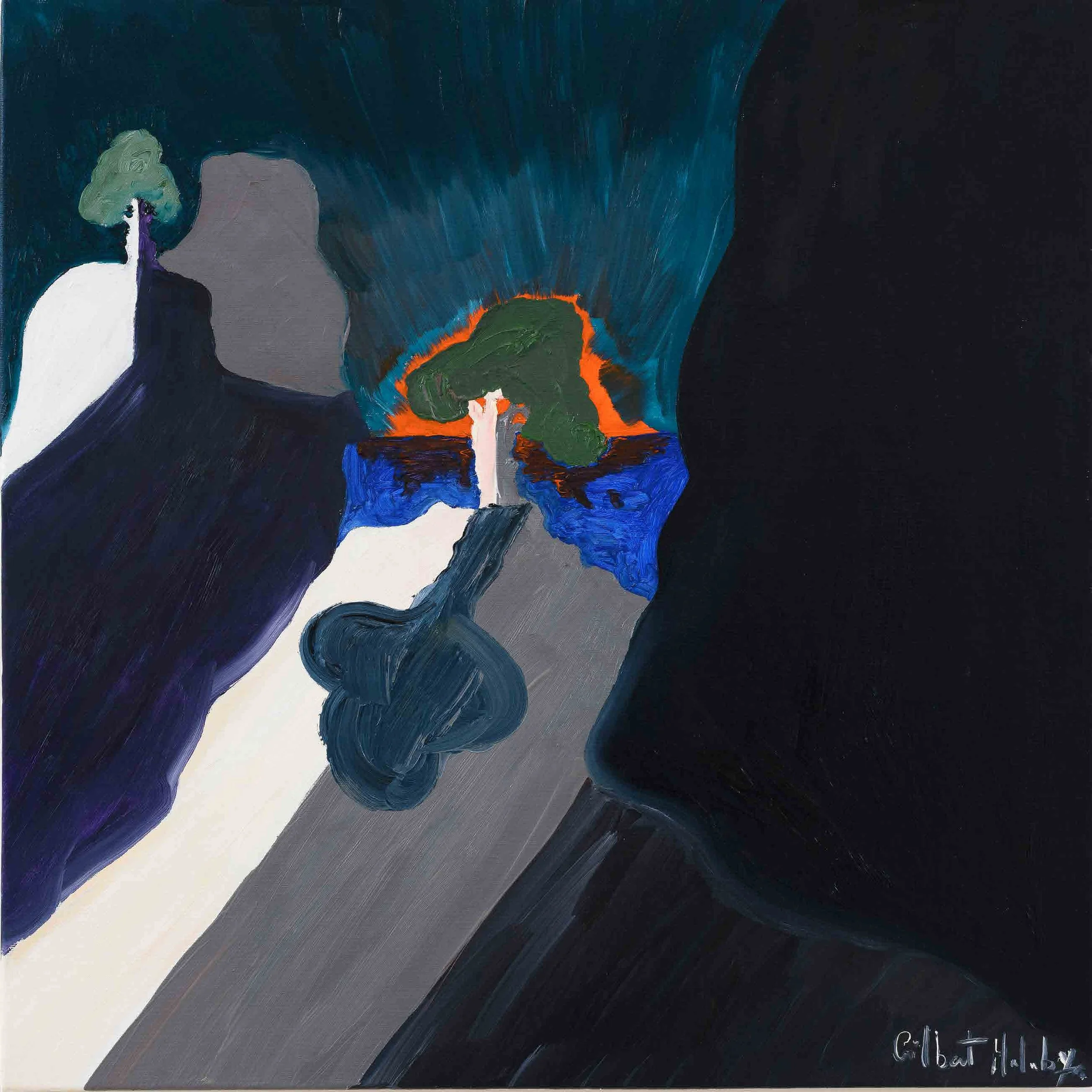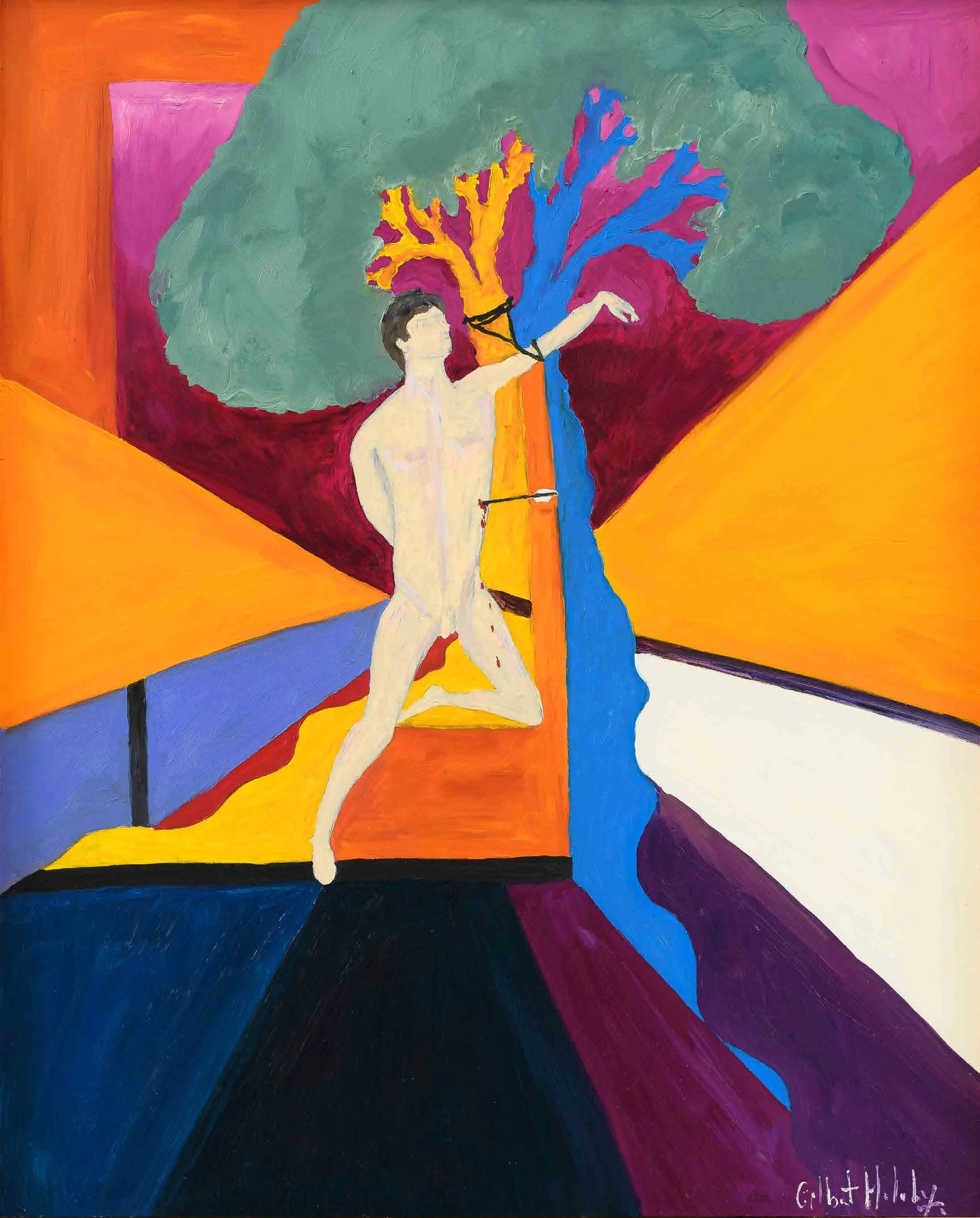
5th June - 15th June 2025
Sonnet V
Gilbert Halaby
Artbooth Abu Dhabi, in collaboration with London’s Marie Jose Gallery, is pleased to present Sonnet V, a show of works by the Rome-based Lebanese-Italian artist, Gilbert Halaby.
Halaby’s first dedicated exhibition in London showcases themes around which the artist has worked extensively, and for which he has become known: the celebrating of the passing of the seasons, and the olive groves that characterise man’s relationship with nature, civilisation, and the ancient world.
But as the exhibition’s title hints, there are new homages at play in Halaby’s visiting of familiar themes. Shakespeare’s famous poem laments with aching pathos the passing of time through the changing of the seasons. A metaphor for the inexorable fading of youth and the perennial urge to immortalise it in new generations, it is a masterpiece of expression which for Halaby resonates deeply with his own artistic intent.
“Shakespeare may or may not have realised that his words were his ‘children’; and that everything he wrote—his own body of work—is the undying summer he left us,” says Halaby. “I would like to believe that the summer I will leave behind is my art.”
Four sets of paintings comprise the exhibition. The first consists of four round canvases, each 1 metre in diameter, depicting the seasons personified: by Bacchus (Summer), St Sebastian (Winter), Rilke (Autumn) and Rimbaud (Spring)—a playful and provocative, yet deeply considered, interpretation. The second is a set of four 150 x 150 cm canvases representing Halaby’s own olive groves in Tuscia, in the northern reaches of Lazio, where the Etruscans held sway for centuries before the Roman Empire ascended—a timeless landscape, whose character shifts evocatively with the seasons.
A third set of smaller, rectangular works 60 x 50 cm interprets the Sibyls announcing the four seasons as the trunks of olive trees —“mothers to all of us, since the first mother for humans is and has always been Nature,” says Halaby. A final set of four 40 x 40 cm paintings reads in sequence as a sort of poem of the metaphysical: one landscape, one hill, one olive tree, morphing in both colour and character across four canvases, as the four seasons themselves flow one into another. In these works Halaby sought to articulate “the presence of shade in the early vision of life and the discovery of the most potent light in its last stages.”
The four sets are complemented by—one might say they culminate in—a monumental round canvas, two metres in diameter, depicting Halaby’s youth with the sonnet in his hand.
As ever with Halaby’s work, ideas of nature, allegory, myth and poetry are in constant and thought-provoking interplay; in his work there are both statements and questions, posited to the viewer with a singular eye for composition and colour. “To see Halaby’s paintings is to read an autobiography in a language only he can fully decipher,” writes Roxane Zand, the Middle East Art specialist and author, in her forward to the exhibition’s catalogue. “But one need not know the grammar to feel its weight.”
Born and raised in Lebanon, Gilbert Halaby has drawn and painted since he was a child. Captivated by the beauty of his country’s natural landscapes, he would spend long hours playing in the woods and amid the olive groves owned by his family and neighbours—signal natural forms which today play a profound role in his art.
In 2003, he moved to Rome and opened a shop selling jewellery and handbags near the Pantheon; in 2017 he relocated to the Via di Monserrato, with an atelier in which he showcases an exclusive collection of hand-crafted bags and accessories of his own design. As much a cultural salon as a boutique, it has become a global cult destination.
Entirely self-taught, Halaby’s style has been honed over the past six years, during which he has dedicated himself to painting every day. His work is part of important private and institutional and public collections, including The Malvina Menegaz Foundation in Castelbasso, Italy; the Kinda Foundation in Riyadh, Saudi Arabia, and the Lebanese Presidential Contemporary Collection.
SELECTED WORKS
Any of the works speak to you?
Contact us for more inquiries


